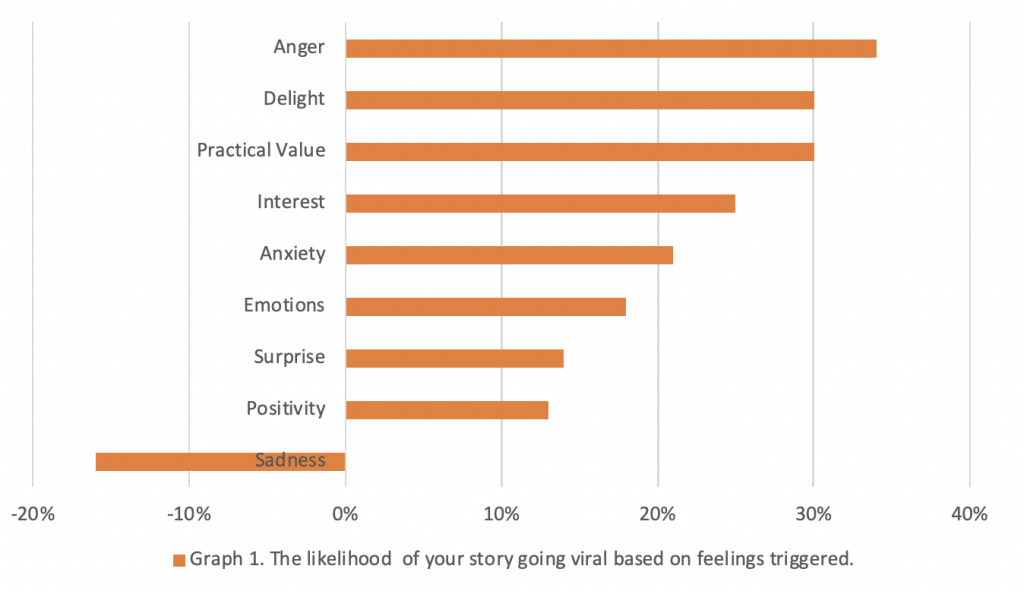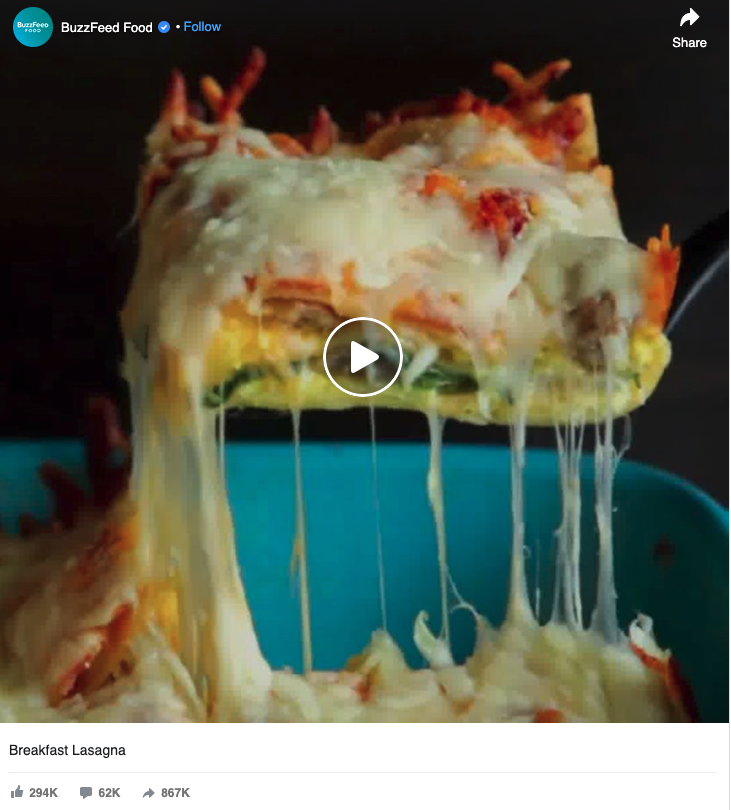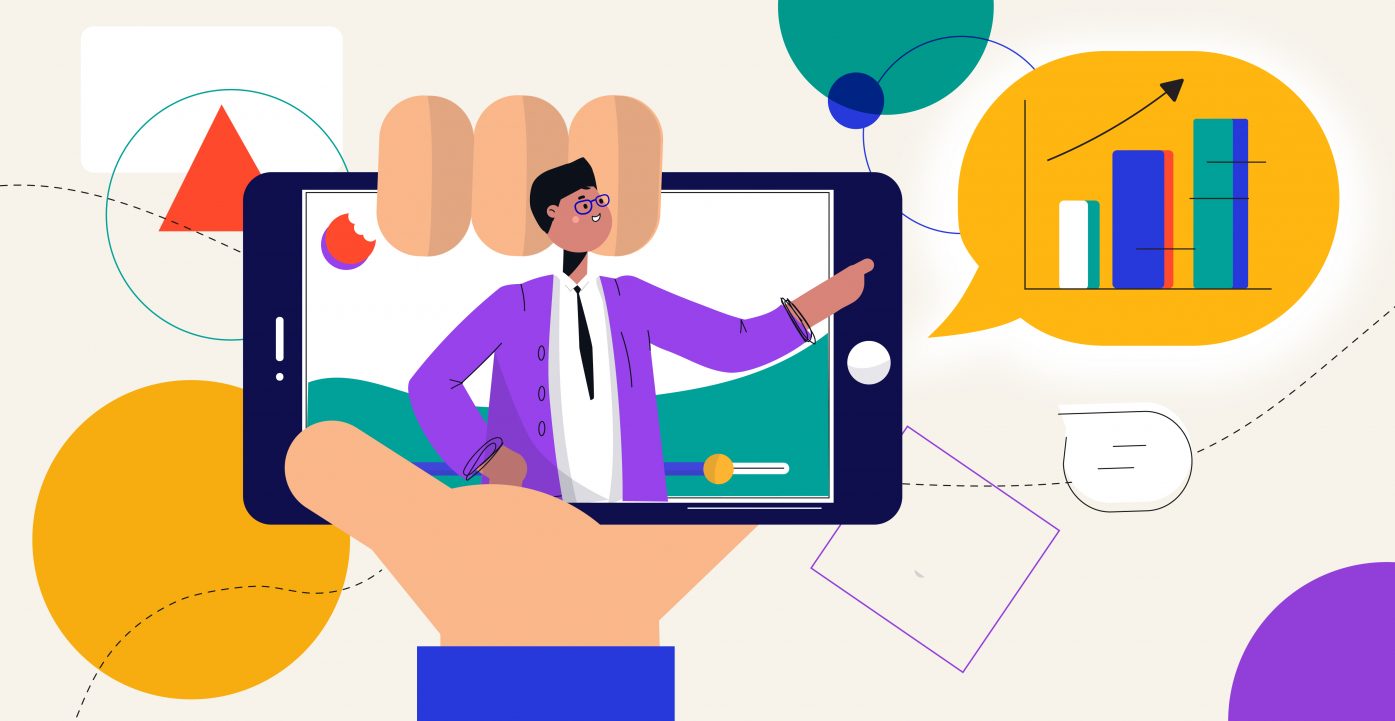6 Expert Tips for Creating Memorable, Viral Content That Converts
Table of Contents
Creating unique, viral content is more challenging than ever. With so many articles, videos and blogs produced by marketers every day (we’re talking SERIOUS numbers here!), you have to make sure that your marketing strategy cuts through the noise and captures your reader’s attention.
But you already knew that, right?
In this blog post, I’ll share a few of my top tips on how to boost your content marketing efforts and win your customers’ hearts and boost ROI. Let’s dive right in!
Effective content isn’t about the format – it’s about how it impacts your reader
Back in the day, it was a commonly held belief that content effectiveness hinged on what format you chose to use. For many marketers, that’s sadly still the case today. In fact, lots of publishers even claim that people don’t read long articles. The ‘shorter = better’ philosophy usually isn’t backed up by anything more than personal experience. To prove them wrong, SEMRush conducted a survey in 2019, which showed that “the top-performing articles are over 5,700 words in length”.
You’ve probably heard of several similar rules that apply to different formats – videos shouldn’t be longer than three minutes, blogs should only be 600 words max, live videos on Facebook shouldn’t take longer than a few minutes… Sound familiar?
If you manage your own marketing channels you should be thoroughly familiar with their analytics. This data has probably already shown you which content format and length works best for your audience, and I bet that it doesn’t line up with the mainstream opinion! That’s because there is no single approach that fits all businesses or sectors.
For me, one thing is for sure – the type of content doesn’t really matter. What does matter, though, is what kind of emotions it inspires and whether it pushes your audience towards taking the action you want them to take. That’s how you measure the effectiveness of your content marketing efforts.
The story of a simple social media content that went viral (IKEA case study)
Stimulating your reader’s curiosity and holding their interest is one of your top jobs as a content marketer. Although the content format isn’t a virality factor itself, the most compelling stories are often published as social media videos, memes, or real-time marketing campaigns.
Designing viral content is the holy grail of all content marketing efforts as it drives buzz and brand awareness at minimum cost. Just take a look at this legendary real-time marketing example from IKEA. Following the Royal Wedding of Prince Harry and Meghan Markle, the Swedish furniture retailer published a simple social media ad that not only endorsed IKEA’s flagship product – a dining chair named Harry – but also celebrated the long-awaited event of the royal wedding.
Source: IKEA Facebook
A simple graphic containing a couple of short paragraphs went viral almost instantly for three reasons:
- It was visually attractive and instantly understandable for IKEA’s target audience (They didn’t use woolly, waffly, vague or jargon-laden copy; instead, they just let the graphic and snappy headline speak for itself).
- They celebrated a worldwide event in an unexpected and brand-appropriate way.
- They subtly stimulated their audience’s emotions (We all wanted a piece of Harry, didn’t we!?)
The secret to this campaign’s success was amazingly straightforward. IKEA saw that the royal wedding was a positive global event, they linked it to their highly relevant Harry chair and created a simple graphic paired with short, witty, and above all, endearing copy that was distributed across all social networks.
Although IKEA’s post was nothing more than a branded social media ad, the context which their social media marketing team tapped into resulted in outstanding organic engagement. This led to a measurable boost in brand awareness and product consideration, which ultimately translated into the sale of the product and a significant uplift in ROI.
Without a single pound spent from the marketing budget, IKEA’s post generated over 18K reactions and 1.7K shares (and we’re only talking about one IKEA’s local page) – something that is almost impossible for with a regular, promotional piece of branded content published without the cultural context.
Without a single pound spent on paid promotion, IKEA’s viral Royal Wedding post generated over 18K reactions and 1.7K shares.
What’s the secret for viral content that converts?
Factors that determine whether a piece of content has the potential to go viral are related to social psychology. Here are the main factors:
- Published content has better chances of being shared if it stimulates strong feelings: happiness, excitement, delight, emotion, anger, fear or awe – something to bear in mind when planning your 2021 content marketing strategy.
- Content that demonstrates practical value.
- Content that addresses a current event.
As IKEA’s Royal Wedding social media campaign demonstrates, context is one of the most significant ingredients to production of share-worthy content.
When your campaign is so closely linked to topical context, your audience can easily share it because they don’t need to explain what it’s related to. It’s the Royal Wedding, they already know enough about that event to appreciate this ad because everyone already has enough prior knowledge to appreciate why the ad is clever or funny. The best brand communicators will jump on those keywords or ideas (like the name Harry and the theme of availability) in their campaigns to get the most valuable and relevant reaction.
But what else?
The importance of emotional engagement
Here’s a great example to prove that provoking an emotive response can boost your content’s chances of going viral.
Let me introduce you to this research conducted by Katherine L. Milkman and Jonah Berger. A couple of researchers examined what sort of content on the New York Times’ homepage was most widely shared, and which scientific research summaries are most likely to be passed along. The study collected information about all articles appearing on the Times’ homepage over a three-month period.
The key takeaways of the research showed that participants reported a higher likelihood of sharing content when it induced more activating emotions, like amusement and anger. On the flip side, when some articles inspired sadness—a de-activating feeling— it actually reduced readers’ reported likelihood of sharing a story.

Berger and Milkman also found that it was nearly impossible to identify which specific emotion was a better indicator of the content’s viral potential. According to their study, positive material was shared via email more often than negative, yet content which evoked intense anger was the most shared of all.
Key takeaway? When you’re planning content, think about what emotional response you’re trying to trigger in your audience.
Discover how to engage your social media audience with animated videos.
Deliver practical value
By definition, practical-value content is anything that the audience can use instantly and easily, without spending too much effort. Some great examples of practical value content utilise all available formats of video marketing such as explainer videos, animated infographics or bite-sized social media videos that inform and engage your target audience.

Just take a look at this mouth-watering, bite-sized social media recipe of breakfast lasagne created by BuzzFeed Food. This particular video marketing format of a short and juicy video recipe drove some exceptional engagement due to the following:
- The video is easy to digest and quick to watch, which are the vital attributes of all social media videos.
- It demonstrates instant practical value – chances are some of those people actually went away and tried to recreate this breakfast lasagne at home.
- People share it because they like to show off their interests and chat about them with their connections. (“Hey, look at me: I’m a foodie! Plus, I like to be creative when I’m cooking”).
BuzzFeed’s food account, Tasty, generates a whopping 2B+ video views per month thanks to their excellent video marketing strategy, making them one of the biggest and most popular publishers on Facebook. The channel also generates an outstanding engagement on Instagram, which creates another stream of loyal followers.
BuzzFeed’s food account, Tasty, generates a whopping 2B+ videos views per month!
OK, but what about other niches?
Suppose you’re representing a brand of products or services not related to the food & drink industry. In that case, you can achieve a similar effect by adding animated videos to your marketing mix. Animated video explainers are highly clickable and shareable content due to their engaging format and educational context. Here is everything you need to know about animated explainer videos.
The study from My Simple Show revealed that explainer videos are an upcoming format of video marketing focused on efficient knowledge transfer in a short amount of time. Specifically, younger generations prefer video over text, which isn’t a surprise considering the rapid growth of visually-rich, video-dominant social media channels such as YouTube, TikTok or Instagram Reels.
Just take a look at this video from Tech Insider:
This short yet engaging animated video has one goal – to educate Tech Insider’s audience about how deep the ocean is. Because the creative team behind the YouTube channel decided to leverage animation, they were able to demonstrate a complex subject with ease. The video instantly got praised by YouTube users with comments like:

To measure the effectiveness of this video, you don’t need to look much further than the view count; this single explainer video generated over 43M views, which is an outstanding result for any social media marketer to achieve.
In total, Tech Marketer’s YouTube channel has over 3.18M subscribers – all thanks to multiple series of animated videos that educate, engage and inspire their audience.
Tech Insider’s video explainer generated over 43M views, while over 3.18M users subscribed to their YouTube channel.
But explainer videos are not only great for B2C marketing efforts. If you happen to market B2B products or services, you can also successfully use them to explain a complex product as a sales enablement tool or as a part of a business strategy pitch.
Here is a great example of B2B animated video explainer video we produced for one of our clients:
What you can see is that this B2B video isn’t just another yawn-worthy ad. Instead, we’ve decided to tap into the comic book aesthetic featuring top superheroes to convey our client’s key message in a clear and memorable way.
If you are not sure how animated videos could fit your marketing strategy in 2021, check out those 10 top use cases of video marketing for business in 2021.
Harness the power of storytelling in viral content (especially in B2B marketing)
Storytelling is an underestimated technique for attracting and winning new customers. This is especially true for the B2B sector where many marketers tend to believe that there is no place for creativity in B2B marketing, and the only winning formula is lengthy PowerPoint presentations with hard figures and factual data.
However, because B2B campaigns are usually a little on the dry side, a compelling, visually attractive piece of content can really shine through and catch your audience’s attention. In fact, studies have shown that our brains retain and transmit much more information — and process it more quickly — when it’s delivered visually.
90% of information transmitted to the brain is visual.
Everyone loves a good story, and that person standing on the other end of your sales cycle is no different. B2B storytelling makes a brand ‘real’ to its audience. A well-communicated business story puts a human face behind a brand, making it more trustworthy and approachable, which is critical in today’s saturated markets.
Let’s take a look at financial services, for example.
BLP is a law firm that offers advice to help well-known financial institutions and other companies to navigate risk and make business transactions work. They are experts at assisting risk officers in planning for and managing regulatory risk – keeping their companies, their boards and their colleagues safe.
To stand out from competitors and make their marketing efforts more effective, they designed an award-winning legal thought leadership and content marketing campaign. The campaign consisted of a series of Ocean’s 11 videos using the format of “cautionary tales”, each inspired by real-life regulatory nightmares.
Those simple yet effective videos used a mix of live-action videos as well as animation to hook the audience and generate inquiries. As a result, the campaign generated 515% more leads than the campaign target, 1108% ROMI as well as international press coverage and a robust future pipeline. That’s the power of thought-provoking B2B storytelling!
The BLP video campaign generated 515% more leads than the campaign target, 1108% ROMI as well as international press coverage and a robust future pipeline.
Just to sum up
- Don’t take the commonly-held belief as gospel. Look at your channel’s analytics to see what resonates with your audience and work with that format.
- Create a campaign with content that deliberately targets a specific emotion in your audience.
- Keep an eye on what’s topical. If you have a product or service which is relevant to something positive in the news, run with it.
- Make your content useful. Give people information worth learning.
- Tell a story with your content, even in the B2B world.
Creating memorable content that converts is a challenging job. Whether you are new to marketing or a seasoned leader, you must remember one thing – virality isn’t born, it’s made.
If you’re looking for a creative animation studio to kick off your next video marketing campaign, why not give us a shout?
Are you looking for practical tips from fellow marketers about how to design and deliver creative campaign? Join our marketing group on Facebook and start a discussion!
Have an interesting marketing story you’d like to share with our readers? You can submit your guest blog post here.



